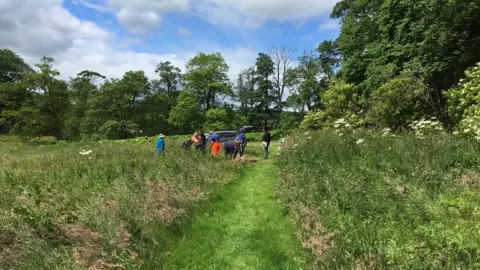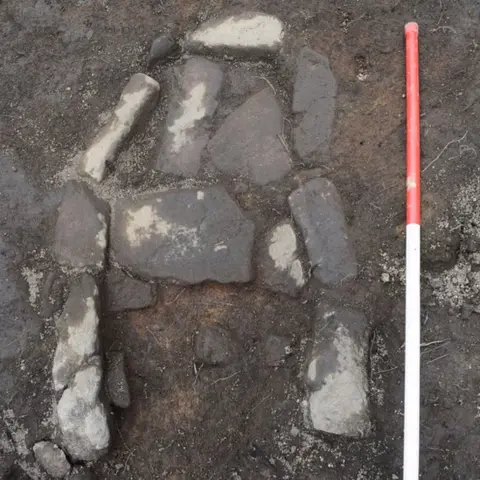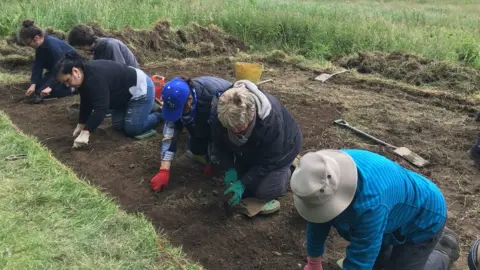Book of Deer monastery dig uncovers 'exciting' evidence
 BBC Alba
BBC AlbaThe site of a lost early monastery in north east Scotland where monks wrote the historic Book of Deer may have been found, researchers have said.
The 10th Century illuminated manuscript is noted for containing the earliest surviving Gaelic writing from Scotland.
The latest attempt to find the site of the monastery focused on a field near ruined Deer Abbey in Aberdeenshire.
Archaeologists uncovered pottery, a stone hearth and charcoal which they said was "extremely exciting".
The pottery has been carbon-dated to medieval times and the charcoal to the early medieval monastic period.
The archaeologists said this was "the most compelling evidence" yet of the lost monastery.
Further digs could be done at the site in an effort to find more evidence of early medieval activity.
 BBC Alba
BBC Alba Previously, efforts to locate the monastery involved the digging of more than 30 tests pits at the graveyard of a church, which dates from 1780.
The latest dig involving the Book of Deer Project focused on a field near ruined Deer Abbey after a geophysical survey found "interesting anomalies" underground. The anomalies included what appeared to be stone rubble.
Details written by monks in Scots Gaelic in the margins of the Book of Deer also provided archaeologists with "tantalising clues" of the location of the monastery.
These clues include suggestions that it was visible from Deer Abbey, where monks moved to after abandoning the monastery.
 BBC Alba
BBC AlbaThe excavation, which took place in June 2017, near the village of Old Deer was led by Aberdeen-based Cameron Archaeology Ltd and filmed for a BBC Alba documentary, Air Tòir Manachainn Dhèir (The Lost Monastery of Deer).
As well as the hearth, charcoal and pottery fragments, the dig uncovered what could be the remains of a circular building, including its possible stone-built entrance and also holes for wooden posts.
Archaeologist Alison Cameron said the results of the carbon-dating were "extremely exciting".
 BBC Alba
BBC AlbaShe said: "A medieval date for this hand-made pottery suggests the building underneath the layers where the pottery had been found might also be medieval in date.
"The date for the charcoal is 1147 to 1260 and is extremely exciting because it is potentially the monastic period, so it is dating to the early medieval period when we know the monastery was in the area."
The Book of Deer is widely believed to be the oldest surviving Scottish manuscript.
 BBC Alba
BBC AlbaAmid the Latin text and the Celtic illuminations are the oldest pieces of Gaelic writing to have survived from early Medieval Scotland.
The Monastery of Deer had the historic book in its care by 1000AD, before the building fell out of use when its monks moved to Deer Abbey.
Today it is held in the collections of Cambridge University.
Air Tòir Manachainn Dhèir will be shown on BBC Alba on Wednesday from 21:00.
